Music Feature: Best Jazz of the Year 2014
Be prepared for some challenging, off-the-beaten path choices, including a new tradition.
By The Arts Fuse Staff
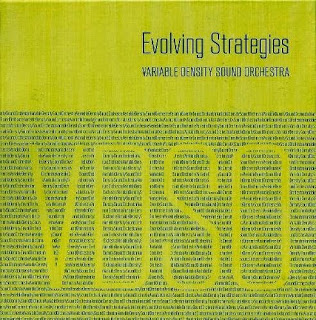
Cover art: Garrison Fewell’s Variable Density Sound Orchestra, “Evolving Strategies.”
Here you go: Arts Fuse music critics serve up their best-of the year picks in jazz. But, given the independence of mind of our reviewers, don’t expect a conventional line-ups. Steve Elman, for example, rejects the idea of a yearly round-up and provides “six vintage releases and five recent ones, plus a ringer, all of which [he thinks] will justify repeated listenings.” Michael Ullman comes up with an eclectic list.
So be prepared for some challenging, off-the-beaten path choices. That is one of the most valuable justifications for music criticism — to point your ears in new directions.
Bill Marx
Editor
The Arts Fuse
Jazz
Who listens now to the titles on those “ten best” critics’ lists of 2012, 2010, or 2000? I know that I don’t. In fact, almost every experience I’ve had looking at a ten best list for a decade or more has been disheartening. Often, I haven’t heard a single release that the critic has heard. How, I wonder, can I know whether his or her judgment would agree with mine?
Even worse, I know that I’ve been initially seduced by a great PR campaign or shiny production, only to discover that the release that delighted me at first simply doesn’t hold its worth when heard again and again. So this year, I’m swimming against the tide and starting what I hope will be a new tradition.
I’ve spent much of 2014 thinking carefully about which recordings I own that I value most highly and which ones I would share most enthusiastically with fellow jazzpeople. Here are six vintage releases and five recent ones, plus a ringer, all of which I think will justify repeated listenings. The vintage ones are proven favorites which will be excellent gifts for any jazzperson who doesn’t already own them. The newer ones (I hope) will be heard and enjoyed in 2016 and 2020, when this year’s fancies are nothing but regrets.
This isn’t a list of must-haves or must-buys. Instead, it represents pinnacles of music that I’ve taken pleasure in scaling again and again. Not every jazz fan will like all of them, but with certain caveats, I think each is well worth the investment, for yourself or for someone else.
At the time of writing, all of these CDs were commercially available. With the exception of the releases by George Russell, Ornette Coleman, and Keith Jarrett / Charlie Haden, all were also available for on-line listening via Spotify.
Vintage:
John Coltrane: Coltrane’s Sound – I think that this is the most balanced and interesting of Coltrane’s Atlantic releases, the perfect bridge between his apprenticeship recordings and his groundbreaking Impulse stuff. It holds the first recordings of two timeless originals – “Central Park West” and “Equinox,” and they are juxtaposed with three ingenious and masterful refashionings of familiar material. “Body and Soul” is the supposed Everest for tenor players as a ballad, but Coltrane takes it Latin and reharmonizes it. “Satellite” is a smart contrafact of “How High the Moon,” and “Liberia” reworks “A Night in Tunisia.”
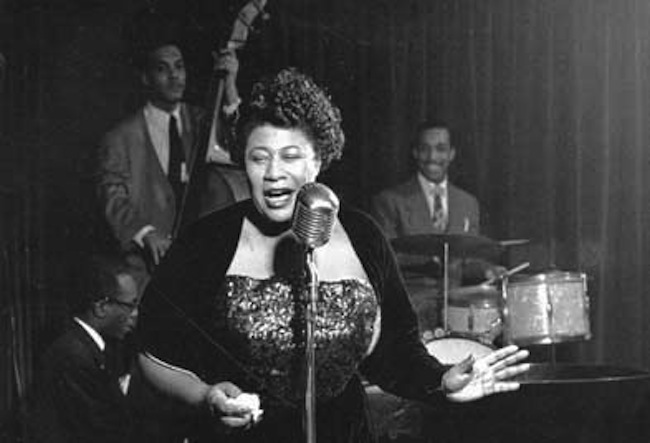
Ella Fitzgerald — The Compleat Jazz Singer.
Ella Fitzgerald: Twelve Nights in Hollywood (Verve, 2009) – Despite the release date, this is a set of four live CDs from Ella’s superbly relaxed club dates at the Crescendo in Hollywood in 1961 and 1962, previously only represented by a single LP. The tunes should not be listened to all at once. Rather, these are consummate performances that should be dipped into two or three at a time, as a reminder that Ella was The Compleat Jazz Singer. Her voice was at its peak in the early 1960s, and her inventiveness and skill have rarely been so richly documented as they are here.
Sheila Jordan: Portrait of Sheila – Probably the greatest debut album by a jazz singer ever made. Jordan was simultaneously worldly-wise and ingenuous in her first recordings as a leader, and time has only enriched these performances by showing how far she has taken her absolute individuality as an artist. The session is also one of the few sustained spotlights for Barry Galbraith, a master guitarist who preferred to be a team player rather than a solo star, and probably the best-recorded example of Steve Swallow’s acoustic bass playing.
Modern Jazz Quartet: European Concert, Vols. 1 and 2 (Collectables Jazz Classics, 2006) – Again, a twentieth-century landmark coming to CD for the first time in the twenty-first. This long-overdue CD issue brings back a double LP recorded at Scandinavian concerts given 1960. It is a definitive display of everything that was great about the MJQ – pianist John Lewis’s meticulous composing and superbly economical soloing; vibraphonist Milt Jackson’s impeccable technique and profound feeling for the blues; bassist Percy Heath’s unerring time and pitch; drummer Connie Kay’s subtle drive; and a collective personality that was far more than the sum of its parts. The repertoire is perfect – about two-thirds originals and one-third standards and jazz classics. Nothing else in the MJQ’s discography is as warm, inviting, and spontaneous as this set is.
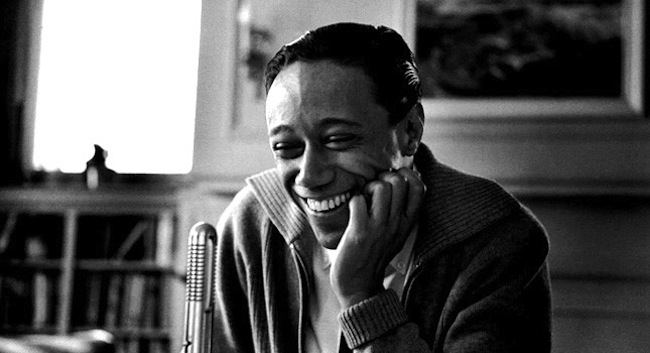
Horace Silver — An artist of his stature simply could not make bad records.
Horace Silver: The Jody Grind (Blue Note, 1967) – An artist of Horace Silver’s stature simply could not make bad records (except on those unfortunate occasions when he invited singers into the studio to deliver his lyrics), but this session is distinctive. Half of it has a three-horn front line, allowing for slightly richer harmonies and a bit more sonic variety than in Silver’s many quintet dates. The playing and soloing, especially by underrated masters trumpeter Woody Shaw and reedman James Spaulding, are superb. Silver’s piano playing is razor sharp and as witty as ever. And each tune is a gem. In the year when we had to face the terrible fact that Silver’s music is a closed book, this chapter reads better than ever.
George Russell: The African Game (Blue Note, 1983) – I was in the audience when this masterpiece was recorded at Boston’s Emmanuel Church, and that experience remains a highlight of my life. Incredibly, the recording always lives up to my memory of the premiere, thanks to the loving care of the production by Bruce Lundvall and the composer himself. “The African Game” is not easy music, but it is a landmark in Boston’s artistic history and as important a composition as anything written by anyone in the twentieth century.
Recent:
Jane Ira Bloom: Sixteen Sunsets (Outline, 2013) – This is the most recent CD in this set of recommendations. It is a collection of standard and original ballads recorded and released last year. I reviewed it previously for the Fuse, and everything I said then still stands. It has some of the most heartfelt and beautiful playing I have ever heard in any genre. If you do not know saxophonist Bloom’s work, it will be a revelation. If you already know how brilliant she is, you must have this CD. It also is a great bargain – almost 78 minutes long, and not a second wasted. It is simply a crime that no one has yet brought Bloom’s band to Boston so that we can hear her play this repertoire live.
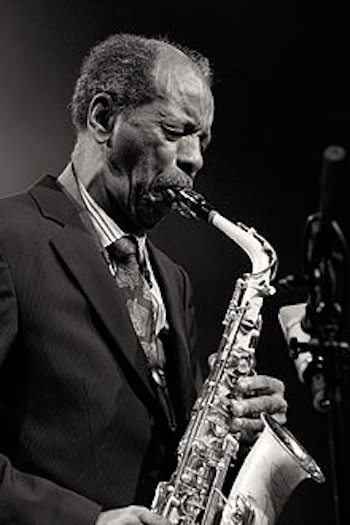
Ornette Coleman — “Sound Grammar” will be his last great statement.
Ornette Coleman: Sound Grammar (Phrase Text, 2006) – As Coleman comes closer and closer to complete retirement, it looks like this set will be his last great statement, and I think, it will ultimately be seen as a thorough masterpiece. The foundation of two basses – one arco and one pizzicato – and drums is distinctive, and Coleman makes the most of it. He is majestic, inspired, witty, bluesy, cheery, and soulful by turns. There are many great individual Coleman performances, but, because of his restless experimentation with sound and instrumentation, there are few releases that sustain excellence throughout a full CD. This is one of them, and probably the most beautifully-produced recording of his career.
Bobby Hutcherson: Wise One (Kind of Blue, 2009) – The spirit of John Coltrane is all over this release, with Hutcherson interpreting five Coltrane originals, three standards closely associated with Coltrane, and a tune by McCoy Tyner. But it is far from a concept album; it is a definitive summation of Hutcherson’s importance as an innovator and stylist, with one of the best working bands of his career. Every time I hear it, it seems to get better.
Keith Jarrett & Charlie Haden: Jasmine (ECM, 2010) / Last Dance (ECM, 2014) – These two CDs, released four years apart, document a 2007 duo recording (made, I believe, at Jarrett’s house studio) by artists who worked together off and on for more than 45 years. They play standards, for the most part, and Jarrett’s notes for “Jasmine” contain a perfect summation of the goal and the accomplishment: “These are great love songs played by players who are trying, mostly, to keep the message intact.” Jarrett’s piano playing has never been more soulfully heartfelt. Haden’s exquisite pitch and gorgeous singing tone on the bass have never been more faithfully captured. The songs are chosen with great care; each has something profound about it, and most are woefully neglected. Even the familiar tunes, like Monk’s “’Round Midnight,” are explored so originally that they sound new. Listening to these sets now, knowing that Haden is gone forever, brings me to tears.
The Ringer:
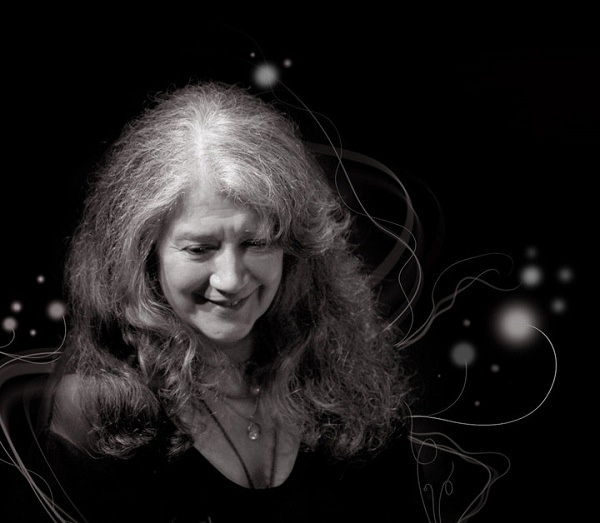
Pianist Martha Argerich — She brings a distinctive and personal approach to every note.
Martha Argerich: Lugano Concerts (Deutsche Grammophon, 2012) – This is not a jazz set, but it’s as rewarding as anything I’ve listed above. I admire this Argentine-born classical pianist for the same reasons I admire the great jazz players: she plays only the repertoire she thinks is most appropriate for her, she brings a distinctive and personal approach to every note, and she thinks deeply about the message of the music. Since 2002, she has been the focus of an annual music festival in Lugano, Switzerland, where she partners with colleagues she respects and spotlights young talent. This set consists of material performed live at the festival between 2004 and 2010. The four CDs contain familiar piano concertos – two by Beethoven, two by Prokofiev, Bartok’s third, and Schumann’s only one; multi-piano concertos by Poulenc and Mozart; and more intimate music by Schubert, Brahms, Stravinsky, and Milhaud. Each performance was carefully chosen, and each performance is immensely satisfying.
— Steve Elman
Steve Elman’s forty-three years in New England public radio have included ten years as a jazz host in the 1970s, five years as a classical host in the 1980s, a short stint as senior producer of an arts magazine, thirteen years as assistant general manager of WBUR, and currently, on-call status as fill-in classical host on WCRB / Classical New England three years. He was jazz and popular music editor of the Schwann Record and Tape Guides from 1973 to 1978 and wrote free-lance music and travel pieces for The Boston Globe and The Boston Phoenix from 1988 through 1991.
Top jazz discs of 2014
This is a year when major venues, the New Yorker among them, have been publishing ill-informed, glibly witty commentaries charging that jazz is a music no one really cares about anymore. So is a pleasure to note, in the face of this cynicism, the emergence of a number of wonderfully diverse jazz projects. I could add to the list below several videos, including the professionally made, biographically-oriented film about saxophonist Charles Lloyd, and such special projects as My Coma Dreams from Fred Hersch and Radhe Radhe, a multimedia collaboration by composer-pianist Vijay Iyer and filmmaker Prashant Bhargava, who were inspired by the centennial of the Stravinsky-Nijinsky Le Sacre du Printemps
.
Amongst the discs listed here, the complex rhythms of Steve Coleman are radically different from the gentle interchanges between pianist Kenny Barron and Dave Holland. The improvisational compositions of Wadada Leo Smith generate wonder as well as the more radical improvisations by Garrison Fewell’s Variable Density Sound Orchestra. If I had to choose a favorite disc of the year, for nostalgic reasons I would go to the duet session between two giants who passed away recently: Charlie Haden and Jim Hall. Magnificently recorded in 1990, this session best captures Haden’s rich sound. The ballads, including Haden’s “First Song,” are inexpressibly touching.
Kenny Barron-Dave Holland, The Art of Conversation (Impulse)
Chick Corea, Trilogy (Concord)
Wadada Leo Smith, Great Lakes Suite (TUM)
Trio 3 Plus Vijay Iyer, Wiring (Intakt)
Garrison Fewell’s Variable Density Sound Orchestra, Evolving Strategies (Not Two)
Steve Coleman, Functional Arrhythmias (PI 147).
Dave Douglas Riverside (Greenleaf 1036)
Jason Moran, All Rise (Blue Note)
Kenny Garrett, Pushing the World Away (Mac 1078)
Paul Bley, Oslo Concert (ECM)
Latin:
Miguel Zenon, Identities are Changeable (Miel Music)
Big Band:
Vanguard Jazz Orchestra, Over Time: Music of Bob Brookmeyer (Planet)
Reissue:
Jim Hall-Charlie Haden (Impulse)
Louis Armstrong, Columbia and RCA Victor Live Recordings of Louis Armstrong and the All Stars (Mosaic)
Charles Lloyd, Manhattan Stories (Resonance)
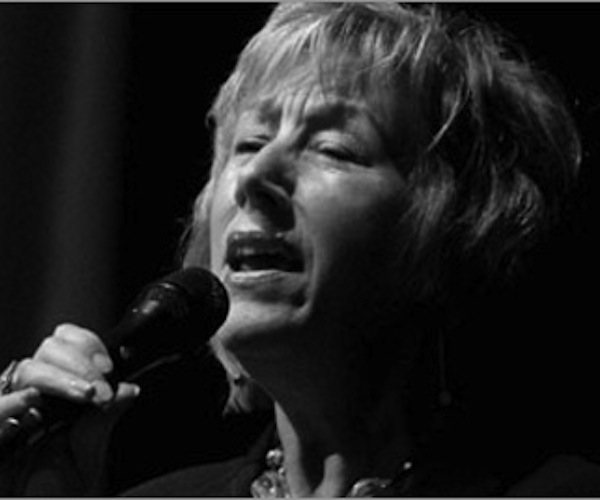
Norma Winstone — Photo courtesy of ECM.
Vocal:
Norma Winstone, Distances (ECM)
— Michael Ullman
Michael Ullman studied classical clarinet and was educated at Harvard, the University of Chicago, and the U. of Michigan, from which he received a PhD in English. The author or co-author of two books on jazz, he has written on jazz and classical music for The Atlantic Monthly, The New Republic, High Fidelity, Stereophile, The Boston Phoenix, The Boston Globe and other venues. His articles on Dickens, Joyce, Kipling, and others have appeared in academic journals. For over 20 years, he has written a bi-monthly jazz column for Fanfare Magazine, for which he also reviews classical music. At Tufts University, he teaches mostly modernist writers in the English Department and jazz and blues history in the Music Department. He plays piano badly.

I took Steve Elman’s advice and got hold of Horace Silver’s The Jody Grind. Been grooving to it and the rest of Silver’s Blue Note canon ever since. Great recommendation.